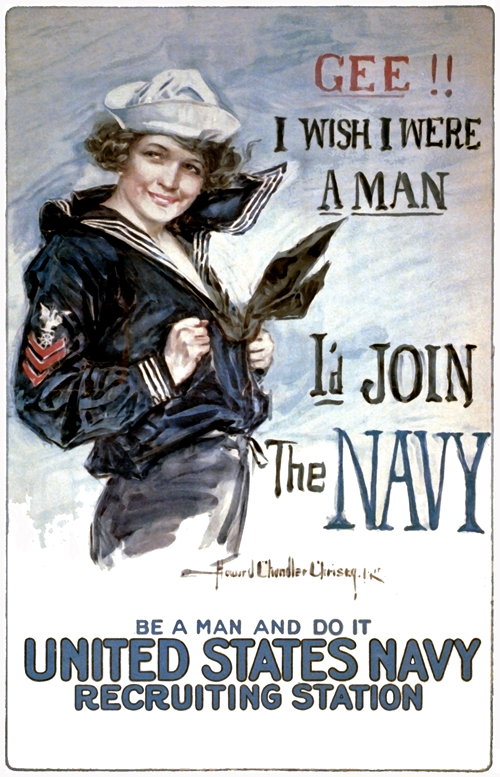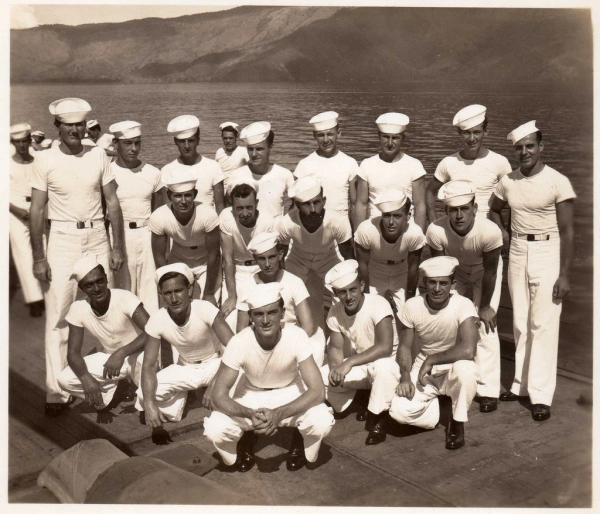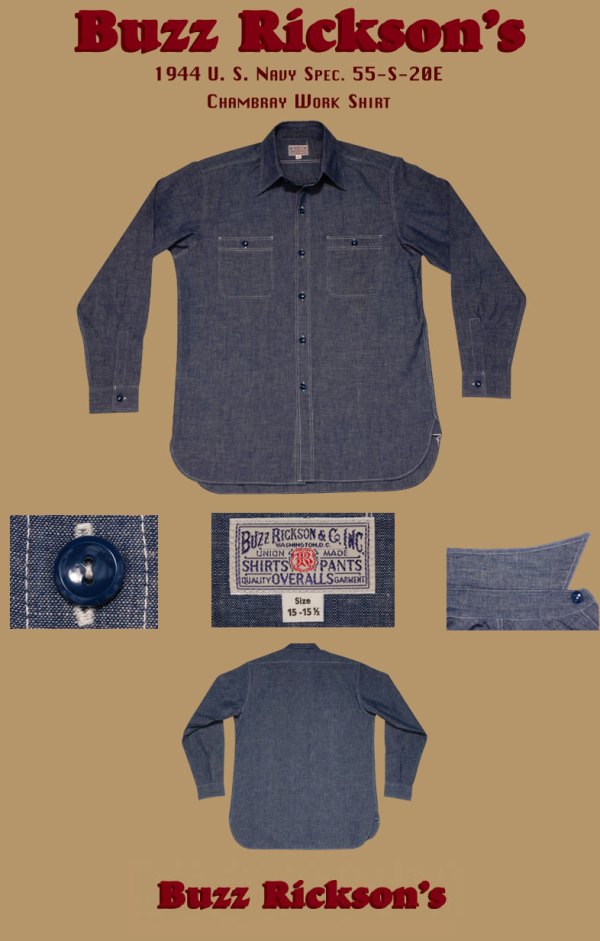–
U.S. Navy recruiting poster– circa 1917. She’s sporting standard naval issue enlisted dress blues– or “crackerjacks” as they were commonly called in reference to the sailor boy on the popular Cracker Jack box.
Women have served as an integral and invaluable part of the U.S. Navy since the establishment of the Nurse Corps in 1908. Nine years later, the Navy authorized the enlistment of women as “Yeomanettes.” In 1948, the Women’s Armed Services Integration Act was signed, making it possible for women to officially enter the U.S. Navy in regular or reserve status.
–
–
It’s commonly thought that the “bell bottom” trouser was introduced in 1817 to permit men to roll them above the knee when washing down the decks– and to make it easier to remove them in a hurry when forced to abandon ship or when washed overboard. Old Navy folklore has suggested that they may have also been used as a life preserver– by knotting the legs at the opening and filling them with air.
–
–
In 1876, Rear Admiral Stephen B. Luce recommended a collar with stars and stripes as a substitute for the plain collar used on the frocks of seamen. Three stripes on the collar was proposed for all grades, with the stripes on the cuffs to indicated grade. One stripe for E-1, etc.
–
–
This working uniform consists of chambray shirt, dungaree jumper, and white “dixie cup” hat. In 1901 regulations authorized the first use of denim jumpers and trousers, and the 1913 regulations originally permitted the dungaree outfit to be used by both officers and enlisted men. Also shown is an M-1926 life belt.
–
–
This uniform consists of dress blue jumper, square-knotted black neckerchief, “pea coat” enlisted overcoat, and white “dixie cup” hat. The “tar flap” collar on the jumper originated as a protective cover for the jacket to protect it from the grease or powder normally worn by seamen to hold hair in place. The black neckerchief or bandanna first appeared as early as the 16th century and was utilized as a sweat band and collar closure. Black was the predominant color as it was practical and did not readily show dirt. By 1944 the Navy had authorized dyeing of the white hat to dark blue.
–
–
First authorized in 1852 the flat hat was eliminated on 1 April 1963 due to non-available materials. The original hats had unit names on the front, however unit names were taken off in January 1941. Also pictured are white USN leggings and the 1943 Bluejacket’s Manual, issued to recruits and containing a wealth of nautical information.
–
–
I love this salty, rogue bunch of sailors in their chambray & dungaree workwear uniforms. This is thought to be the USS Denver (CL-58). Most interesting in this photo is that the negative had the ships in the background scratched/painted out so that no one could tell what other ships were operating with them. This was in a collection of photos from 1942-45.
–
–
The Summer White uniform consists of a short-sleeved white button-up shirt worn open-collared, white trousers and belt, and dress shoes (white for chiefs and officers, black for petty officers and below). Either the All-Weather Coat, Blue jacket, or Peacoat may be worn with this uniform.
–
–
Buzz Rickson’s USN Chambray Work Shirts are the best-made, highest quality chambray work shirts. Every original and distinctive styling feature from the 1940’s has been reproduced, including true, hard-wearing chambray fabric, reinforced shoulder yoke, dark blue selvage edges, bakelite-style dish buttons, and double-stitched seams for superior strength.
–
–
To the Shores of Iwo Jima– circa 1945, Pt. 1
–
To the Shores of Iwo Jima– circa 1945, Pt. 2
–










Sailors were always the coolest of all the military personnel.
Utterly marvelous info. Married a midshipman, myself. Hard not to fall in love with a guy in those uniforms.
He’s still my best friend, 26 years later.
Bell bottom trousers for water survival was not a folklore, but a fact. After personally training at least a couple thousand navy recruits in the water survival course for basic training ( RTC Orlando) , each recruit was required to demonstrate personally the use of these trousers as a floatation device and swim a minimum of 25 yards. The use of dungarees shirts was demonstrated, along with the white hat (Dixie cup).
Mr. Wilson,
Thanks for confirming. More importantly, thank you for your service.
Best Regards,
JP
If you want to see much of these classic uniforms in action, I highly recommend watching The Sand Pebbles (1966) with Steve McQueen.
What, no mention of Mister Freedom, or is that becoming too cliche for blogs? 😉

*digging thru the archives and found this..*
I have been in the Navy since 1998 and oddly enough, the picture that is used for folding/rolling the neckerchief is still in use.
And as Chief Wilson stated, using uniform items for flotation devices was indeed taught in boot camp. (And it really does work)
/R,
AS2(AW) T